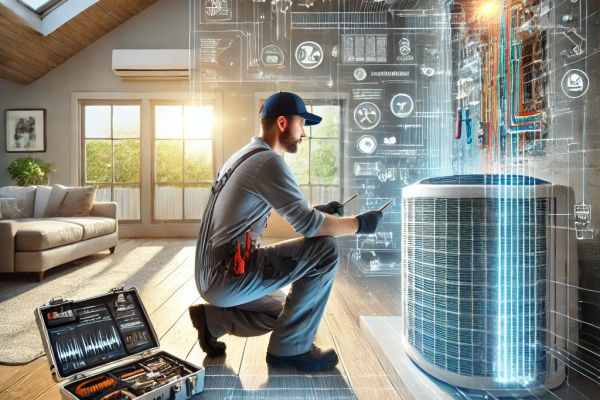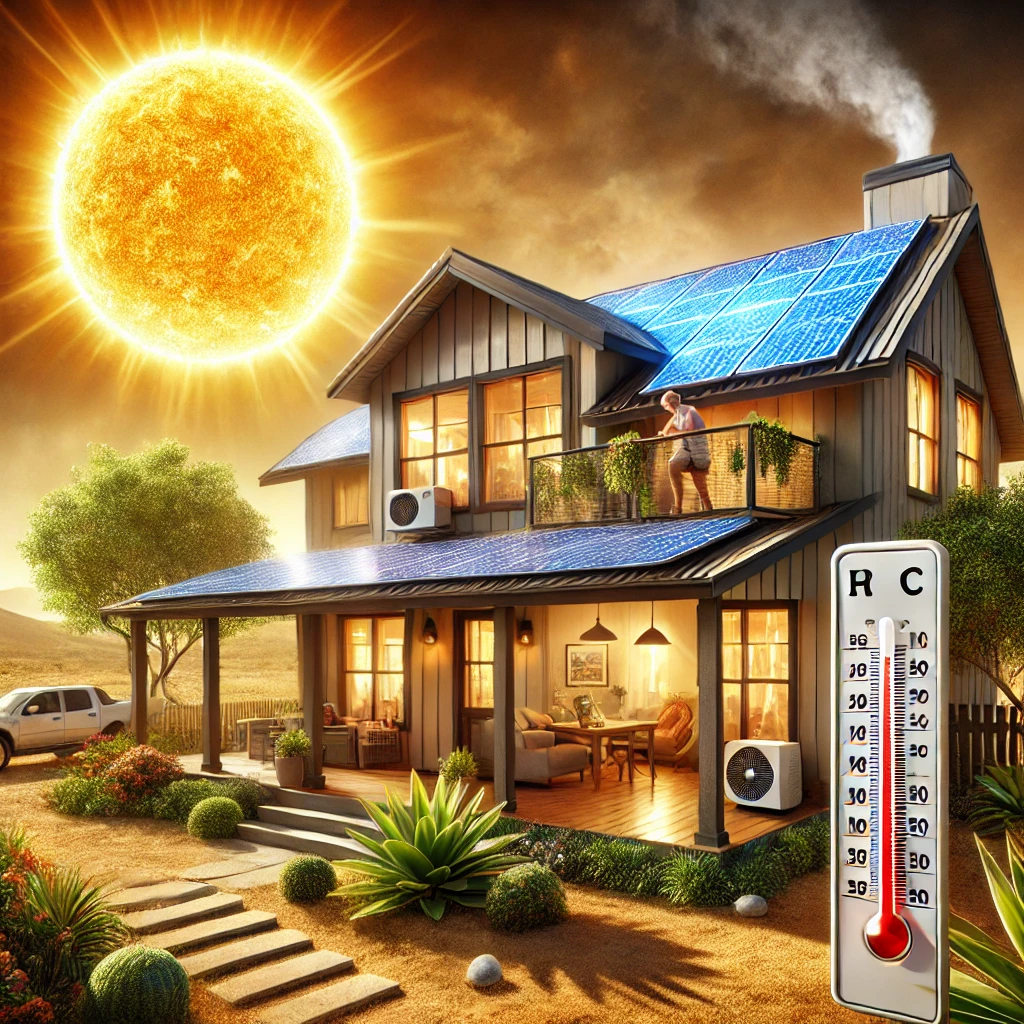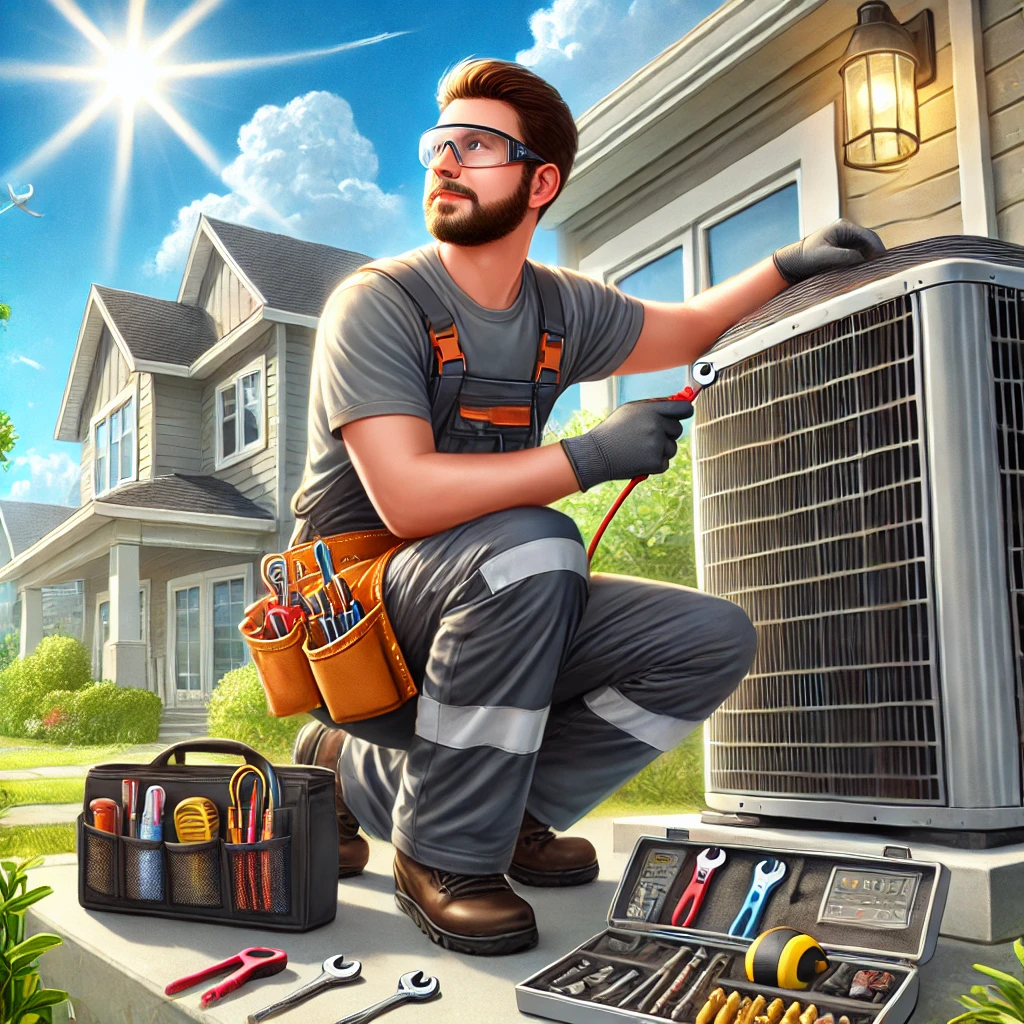
Top HVAC Trends for 2025: What Texas Professionals Need to Know
When Texas temperatures soar to 40°C (104°F), a reliable HVAC system isn’t just a luxury—it’s a necessity. As modern technologies rapidly evolve, HVAC professionals must keep up with the latest trends to stay competitive. What innovations are already transforming the market, and which ones will be particularly critical in 2025? Let’s dive in!
Key HVAC Trends for 2024-2025: What’s Already Shaping the Industry?
Some of the trends we saw in 2024 will continue to be relevant in 2025. Let’s explore the key developments already shaping the future of HVAC systems.
1. Predictive Maintenance: Repairing Before Breakdown
Smart systems are no longer a novelty. Today, nearly every air conditioner or thermostat is Wi-Fi-enabled, collecting data on temperature, humidity, and energy consumption. This allows HVAC professionals to analyze real-time information and prevent breakdowns before they happen. This approach saves customers money and reduces emergency call-outs for technicians.
Furthermore, artificial intelligence (AI) in HVAC systems is becoming increasingly widespread. Machine learning algorithms can predict equipment failures and recommend scheduled maintenance ahead of time. This not only reduces repair costs but also extends the lifespan of HVAC units. In the future, this could lead to fully automated service models where systems autonomously schedule their own repairs.
Automated HVAC diagnostic systems are already being integrated into commercial and residential buildings. These allow remote monitoring of system performance and early detection of potential malfunctions, minimizing costly repairs.
Subscription-based HVAC maintenance models are also emerging. Customers pay a fixed monthly fee for regular system check-ups, significantly reducing the risk of major breakdowns and high repair costs.
Another development in predictive maintenance is the integration of AI-driven sensors that detect anomalies in performance and automatically alert both users and service providers, allowing for immediate interventions before any real issues arise.
2. Transition to Ductless Solutions
Texas has many older homes where installing a central air system is an expensive endeavor. Leaky and poorly insulated ducts exacerbate energy efficiency issues. Ductless mini-split systems are becoming the go-to solution, providing targeted cooling, reducing energy use, and being easy to install—even in historic buildings.
Mini-splits are especially popular among homeowners looking to improve comfort without undergoing major renovations. These systems eliminate the need for ductwork, making them more energy-efficient. Additionally, modern models feature automatic humidity control, which is crucial in Texas’ climate.
Some companies are offering integrated solutions that combine mini-split systems with solar panels, making them even more energy-efficient.
Ductless systems are also being integrated with smart home automation systems, allowing users to control their climate remotely, program cooling schedules, and receive efficiency reports directly on their mobile devices.
3. Eco-Friendly HVAC Systems: The Future is Here
Customers are increasingly choosing energy-efficient solutions, and regulations are becoming stricter. The use of low Global Warming Potential (GWP) refrigerants is now the industry standard. In Texas, where solar power is abundant, solar panels and hybrid HVAC systems are becoming an even more attractive investment.
Regulatory changes require HVAC professionals to stay informed about new standards and technologies. In 2025, incentives for eco-friendly solutions will continue to expand, including tax credits for homeowners who install energy-efficient heating and cooling systems.
New innovations, such as thermoelectric air conditioners, are emerging. These use advanced cooling methods that eliminate the need for traditional refrigerants, reducing environmental impact.
Additionally, heat recovery ventilation (HRV) and energy recovery ventilation (ERV) systems are gaining popularity. These technologies reuse heat and cooling energy that would otherwise be lost, further improving the efficiency of HVAC systems and lowering energy bills for consumers.
4. Enhancing Customer Service with Digital Technologies
Online booking, automated reminders, and real-time service updates are now expected by customers. If your business still relies on phone calls and paper invoices, it’s time to implement CRM systems and mobile payment options.
Clients also demand more transparency from service providers. They want detailed reports on system performance, maintenance recommendations, and access to service history via mobile apps. This boosts trust and increases customer loyalty.
AI-driven chatbots and virtual assistants are helping businesses provide quick, automated support, diagnosing issues and offering preliminary solutions before dispatching a technician.
Moreover, augmented reality (AR) is being utilized in customer support, allowing technicians to guide homeowners through basic troubleshooting and minor repairs remotely, reducing unnecessary service calls.
The Future of HVAC: 9 Key Trends for 2025
5. Intelligent Ventilation Systems
Modern ventilation systems adapt to humidity and air pollution levels, providing better indoor air quality. In Texas’ hot climate, these technologies reduce the burden on air conditioning units while maintaining a comfortable indoor environment.
These systems are also being equipped with smart sensors that track air quality in real-time and adjust airflow accordingly, reducing allergens and pollutants inside the home.
6. Expanded Financing Options for Customers
With HVAC installation costs rising, many companies now offer leasing and financing programs, allowing customers to spread out payments. This is especially beneficial for Texas homeowners who need efficient cooling but may not have the budget for an upfront investment.
Additionally, government-backed financing options and low-interest green energy loans are being introduced, making it easier for homeowners to invest in energy-efficient HVAC upgrades.
7. Automated Energy Management Systems
Next-generation HVAC systems can integrate with home energy management systems, helping residents lower electricity bills. These systems analyze user behavior and automatically adjust heating and cooling settings for maximum efficiency.
Some advanced models can even synchronize with weather forecasts, adjusting their operation to minimize energy use during extreme temperature fluctuations.
8. Growing Demand for HVAC Professionals
As installations of new HVAC systems increase, companies are struggling to find qualified professionals. Training and certification programs are gaining popularity, helping to attract new talent to the industry.
In response, many HVAC companies are partnering with trade schools and apprenticeship programs, ensuring a steady pipeline of skilled workers to meet growing demand.
9. The Use of Big Data and Analytics
HVAC systems are now capable of collecting and analyzing massive amounts of data, optimizing performance based on energy consumption trends. This data-driven approach helps reduce costs and improve overall efficiency.
Big data is also being used for demand response programs, where HVAC units adjust cooling and heating loads based on real-time grid demands, helping to balance energy consumption across entire cities.
Conclusion
The HVAC market in Texas is evolving rapidly. Smart technology, energy-efficient solutions, and personalized service are the driving forces behind industry growth in 2025. Stay ahead by keeping up with emerging trends and adopting digital tools to enhance customer satisfaction and operational efficiency.
With continuous advancements in AI, automation, and eco-friendly solutions, HVAC professionals who embrace innovation will position themselves for long-term success in an increasingly competitive market.






